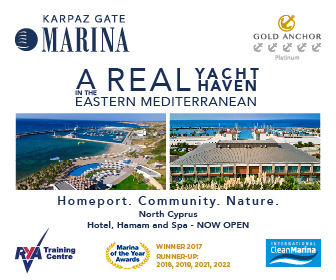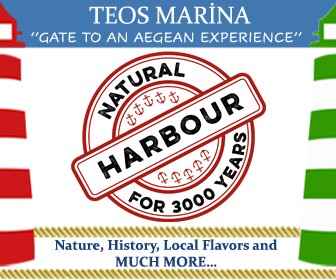Turkey to Indonesia via the Red Sea
As coronavirus made its way into the world early 2020 these American double-handers felt lucky they were tucked up safely in a marina in Finike, Turkey. But as the months wore on and the pandemic grew, so did their concerns about visas and political tensions in the eastern Med. After careful consideration they decided to head home to the USA via the Red Sea – first stop Indonesia. This is their account of their 59 day passage, two back to back quarantines and ongoing confinement aboard.
Published 4 years ago
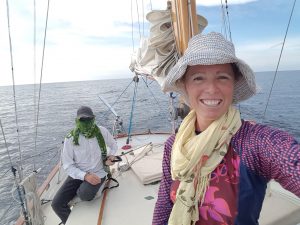

As coronavirus made its way into the world we felt lucky to be already safely in a marina in Finike, Turkey. As the months wore on and the epidemic grew, so did our concerns about visas and political tensions in the eastern med, especially between Greece and Turkey. We looked into to making our way home, eastbound or westbound, as soon as possible.
Many ports on either route home were closed as countries struggled with the virus, but SE Asia seemed to offer possibilities. Two marinas in Indonesia were reportedly working with immigration and offering safe haven – Nongsa Point Marina and Marina Del Ray – and the location of Nongsa was perfect for continuing on to Alaska next spring.
Weighing all factors, we decided to go. It’s not easy to make decisions in such a time of uncertainty!

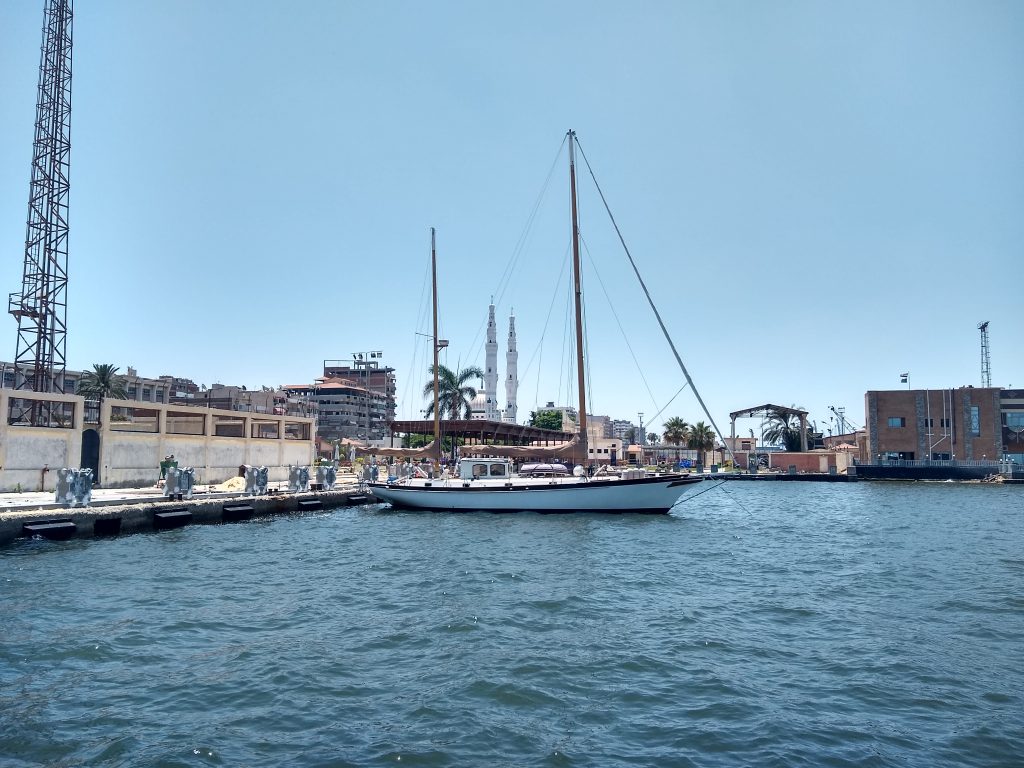
- Port Said, Egypt
Egypt
On July 18 after provisioning, forwarding our clearance and passport information to Nongsa, and clearing out of Turkey, we made the short crossing south to Port Said and the entrance to the Suez Canal.
We were subjected to the expected dubious charges, demands, and ungracious behavior but also, pleasantly met some kindly friendly people. We loved the stark beauty of the desert and spotting lateen sails.

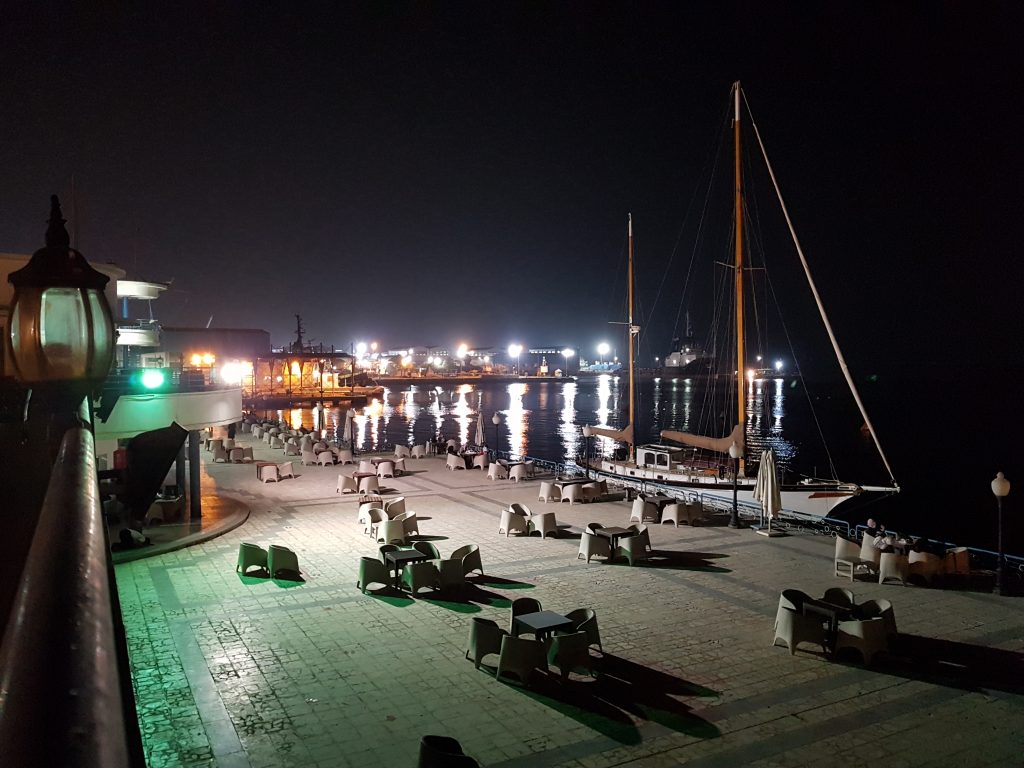
- Ismalia Yacht Club, Egypt

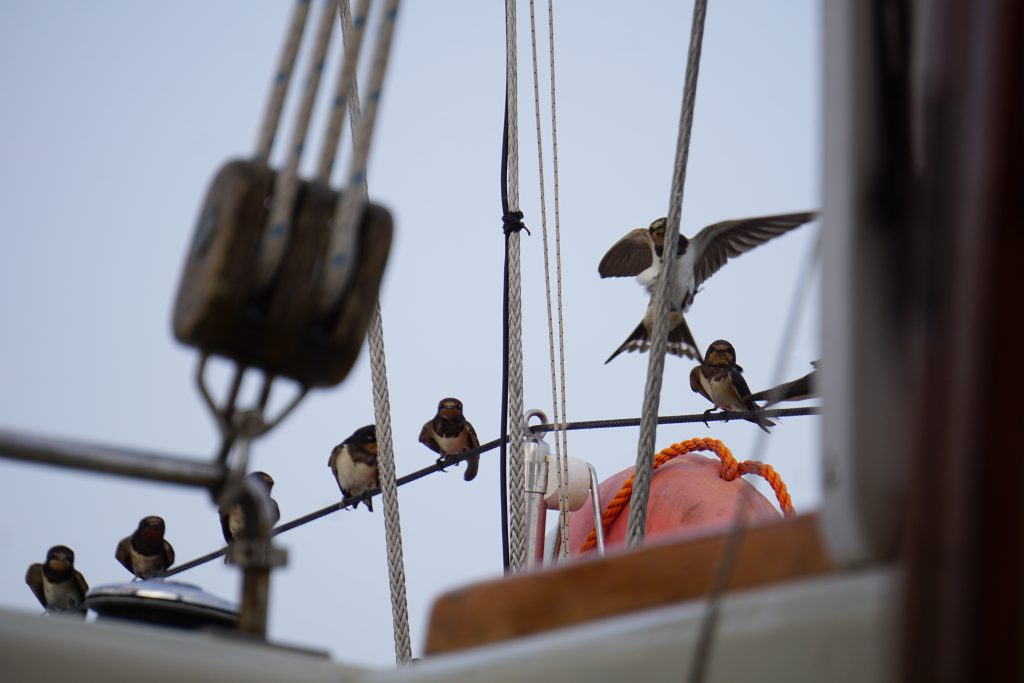
- Sudan Swallows
Sudan to Djibouti
Further south, off the coast of Sudan, we encountered a nasty red grit laden weather phenomenon called the haboob which sadly overpowered our following wind. We followed an inside route along the coast near Port Sudan and Suakin and found some shelter from the gale force winds. Despite slow progress we passed through Bab al Mandeb and arrived in Djibouti on August 5.

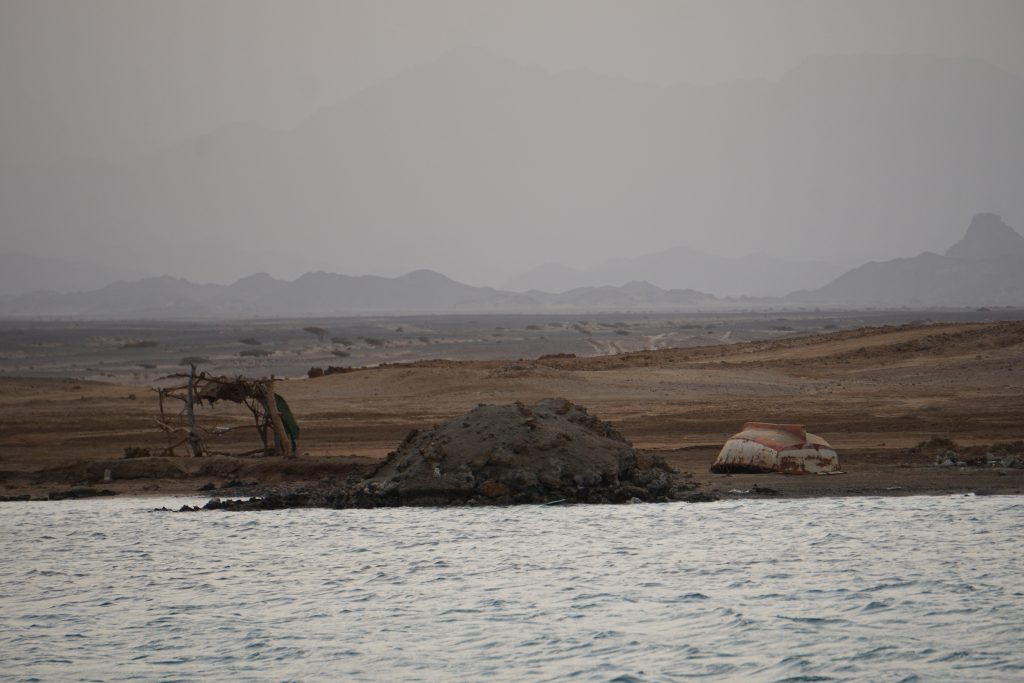
- Marsa Inkefal, Sudan
Djibouti
Djibouti was reported to be open – but we soon learned it was not open for us in any practical sense. We needed a doctor to administer a COVID test in order to obtain a visa, but none could be found willing to do so. It’s unclear if more money would have remedied this situation but since we only needed a top off of fuel and water it wasn’t worth more than a day of our time trying. We arranged for purchase of stores with our agent Moustique and remained onboard. By August 10 our wind forecast had improved and we sailed out into the Gulf of Aden in a fine breeze.

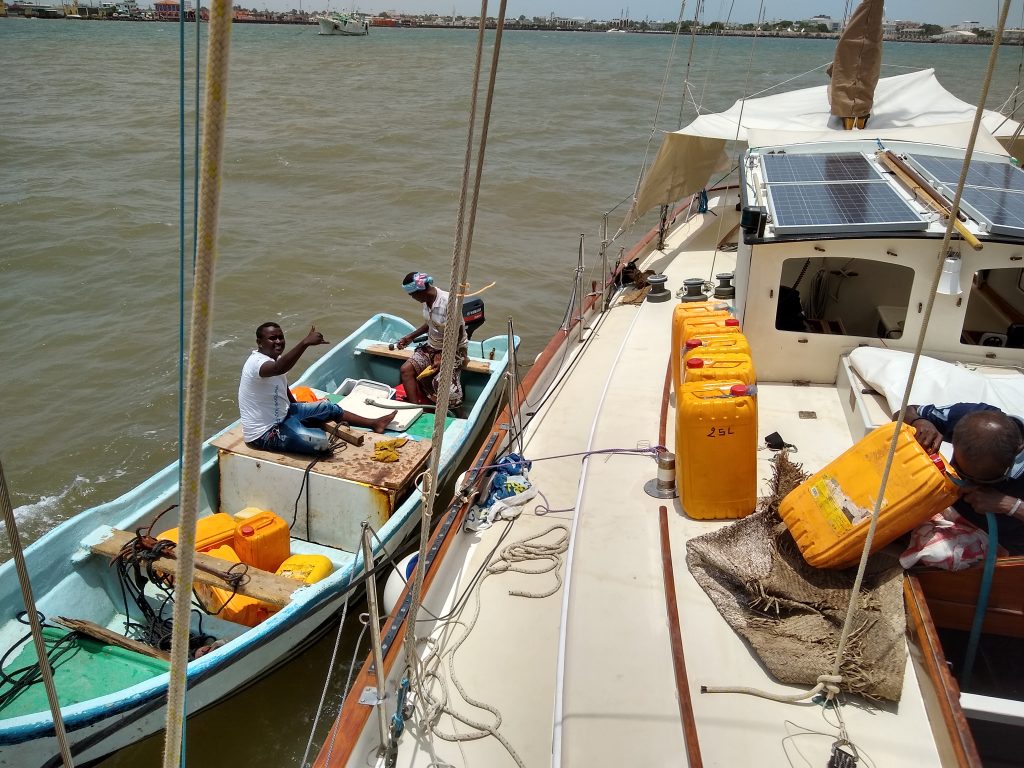
- Refueling in Djibouti
Gulf of Aden
As expected in the time of the SW monsoon, the fine breeze grew into more wind than we needed. As we passed north of Socotra and entered the Arabian Sea wind was shrieking in the rigging and the seas seemed huge. We sailed under a double reefed mizzen and a reefed staysail until even that small amount of sail was too much.
Chatting with a passing container ship, the Cosco Kilimanja, we learned that the wind at that moment was sustained 59 and gusting to 64. In knots! The forecast had been sustained high 20’s gusting into the 30’s but it is an area known for high winds. A little bit of staysail alone pulled us at top speed for a few more days until the wind started to ease. Normally we would heave-to in sustained high winds and big seas (just wait out the blow in comfort) but in this area the wind lasts for weeks and there is no point in loitering in pirate waters. So we kept sailing on, taking plenty of solid water on deck. A sure pirate deterrent if ever there was one!
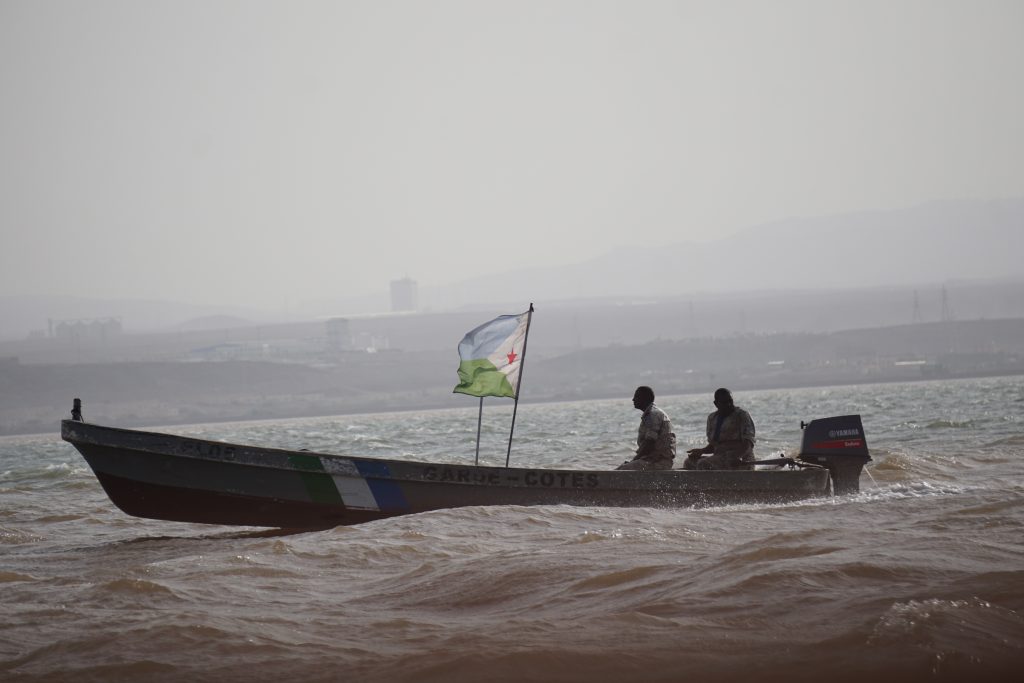

Indian Ocean
As it always does, the wind moderated, we shook out the reefs, set the mainsail, and our speed dwindled. Only a nasty swell remained to remind us of what we had been through. Irene normally sails well in light winds, but the swell shook the wind out of the sails and a crop of gooseneck barnacles slowed us even further. Days of mileages under 100 nm had us recalculating our arrival date regSularly.
It wasn’t all bad as the fishing was good, cooking was possible, and our diet improved after days of “storm eating.”
As we closed in on Sri Lanka on August 28, a friendly fishing boat approached and traded some fresh produce – including a pineapple a papaya and coconut – for bags of potato chips! What a happy day!
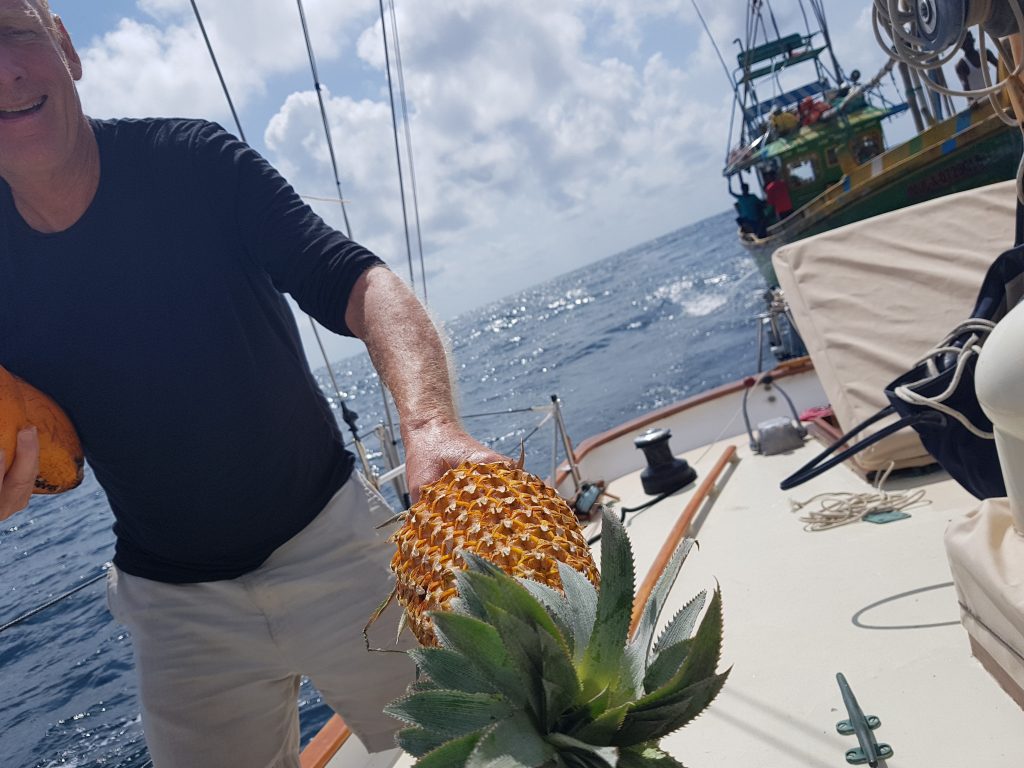

Approaching Indonesia
On September 3 as we approached Banda Aceh, the northern tip of Sumatra and the entrance to the Strait of Malacca, we suffered a complete failure of our autopilot. This was a serious blow to our two person team. The faithful Monitor windvane still worked, but light wind requiring motoring was expected in the Strait. Motoring would require hand steering from this time until we reached Nongsa.
We also lost our ability to plot AIS targets on the chartplotter. The next weeks were a blur of hand steering, dodging fishing boats day and night, thunderstorms, anchoring in roadsteads, and quick naps when sailing.

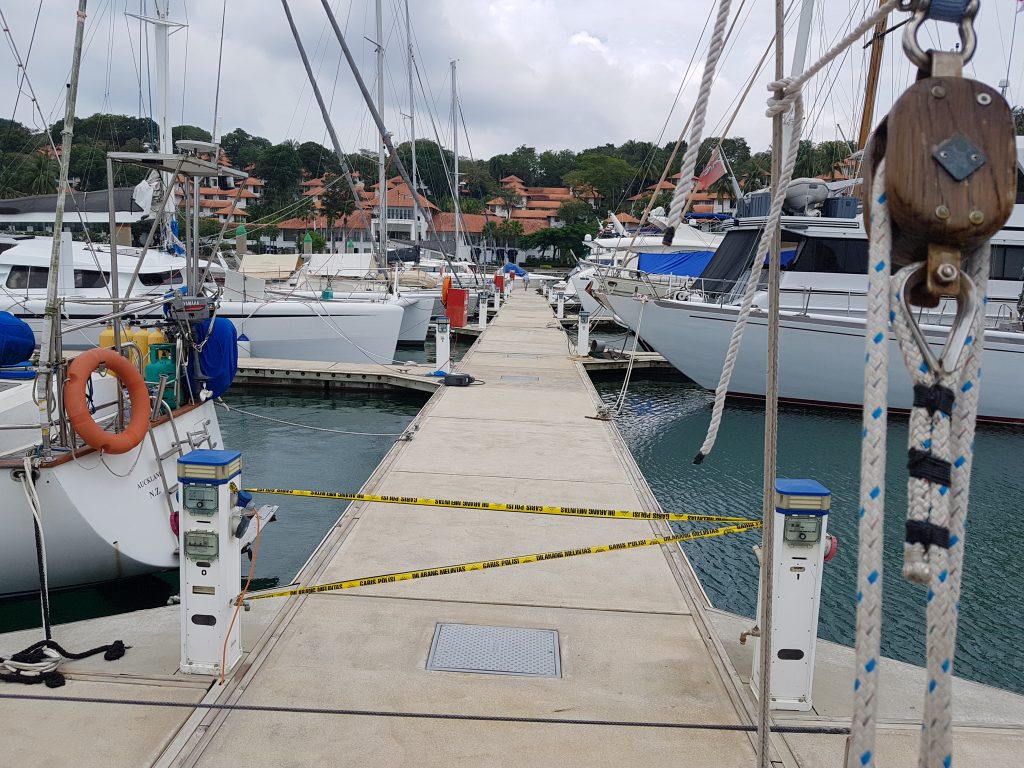
- Quarantine at Nongsa Point Marina
Nongsa Point Marina
When we arrived at Nongsa on September 14, we were happy but bleary eyed. We were quite tired from hand steering and 59 days of challenging sailing.
A storm of a different sort was waiting for us at Nongsa Point Marina. The marina manager, John, welcomed us at the dock, but told us that our entry into the country might be problematic because entry rules had changed while we were at sea. The immigration officer informed us that we could not stay in Indonesia unless our US Embassy would write a letter vouching for us.
We quickly emailed a request – but the US Embassy in Jakarta would not write such a letter, and suggested we try Singapore instead. The Indonesian immigration officer gave us a week to make repairs, but then we must depart. We were confined to the marina in the meantime. Our one week turned into two – thank you, Indonesia, for the grace period – it’s quite difficult to repair and prepare quickly without being allowed to go purchase parts, food and supplies.
Other sailors in the marina (mostly friendly Aussies) were extremely helpful to us, and two marina staff members volunteered to provision food for us. During this time we contacted any and all neighboring countries to see if we would be accepted. Malaysia, Thailand, Vietnam, Brunei, Philippines, and Taiwan were all closed to us. Only Singapore would accept us on an emergency basis, and we will be confined on board indefinitely. We filled diesel and water tanks, fixed the autopilot and other issues, and became seaworthy again. We finalized arrangements with Singapore.

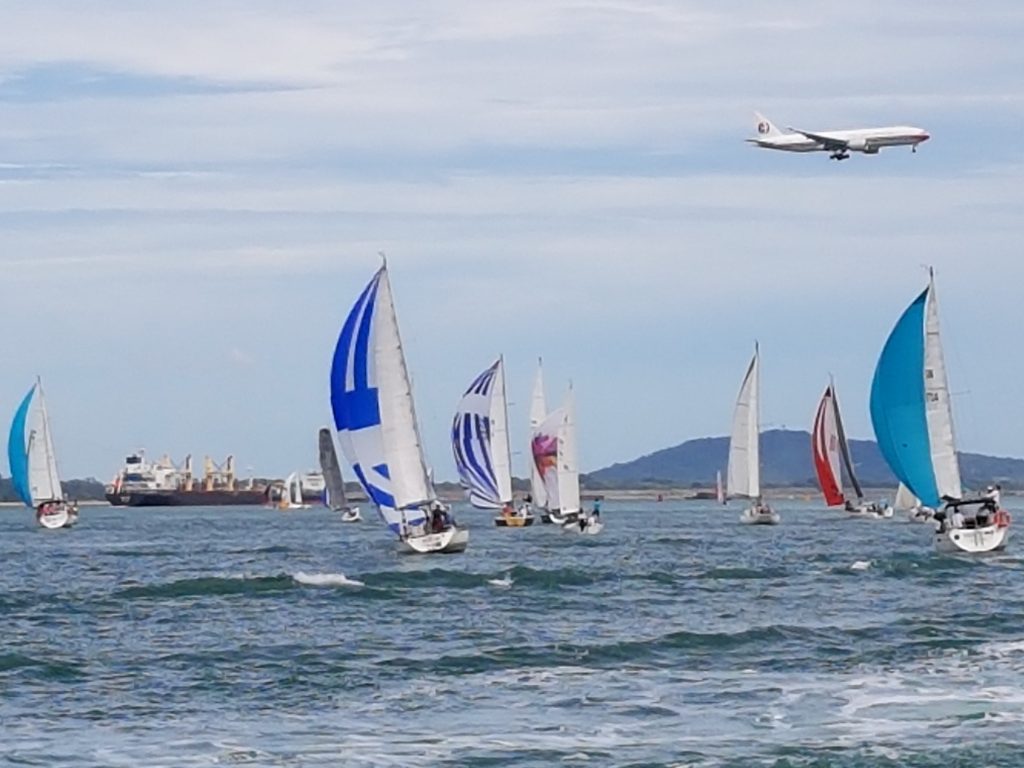
- Busy Changi, Singapore
Singapore
We made a short hop across the Strait and picked up a mooring at Changi. The club has been helpful and welcoming and we have an excellent agent, James Lim of Marvelous Yachting PTE LTD. We are legal, safe from weather and entertained by a parade of commercial shipping. We’ll hope for an easing of Covid and an easing of restrictions.
One of my favorite things about Noonsite reports is recommendations. We had some exceptional assistance tracking and resolving our Raymarine autopilot problem here in Singapore. Bali provided parts and helped us troubleshoot our Raymarine network failure. With his assistance we restored full function to our system.
I/O Services & Solutions
Contact “Bali”
E-mail: ekng@iosstelecom.com
Phone/WhatsApp +65 8189 5649
Carrying on Home
The next leg of our journey home to Seattle begins in late January or February, after the typhoon season has ended. We’ll follow the great circle route (shortest mileage) past Borneo, the Philippines, Taiwan, Japan, the Aleutians, British Columbia, and finally arrive home in Puget Sound. The big question is whether we will be allowed to stop or not anywhere. It’s a big downside of sailing in Covid times, not being able to stop and explore wonderful places we pass. We have missed and will miss exploring wonderful places. We’ll leave Singapore ready to sail non-stop if necessary.
In hindsight, are we glad we chose our eastbound route, or do we wish we had gone westward through the Med, across the Atlantic, through the Panama Canal, and home via Hawaii, Alaska, British Columbia? Yes, we feel we made a good decision with the information we could gather. Obviously we would have preferred to be welcome in Indonesia, and be allowed ashore. But not moving, or taking the other route contains risks and unknown issues as well many of which will only become apparent in the next few months. And we have very little patience for second guessing or decision shaming.
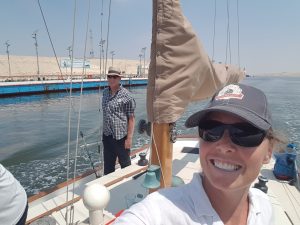

SY Irene
Homeport is Ballard, Washington
………………………………………………………………………………………………………………………………………
The opinions expressed in this article are the author’s own and do not reflect the view of Noonsite.com or World Cruising Club.
Related to following destinations: Djibouti, Egypt, Finike, Indonesia, Nongsa Point Marina, Singapore, Sri Lanka, Sudan, Turkey, Western Indonesia - Batam Island, Western Med
Related to the following Cruising Resources: Circumnavigation, COVID-19, Indian Ocean, Red Sea, Routing







